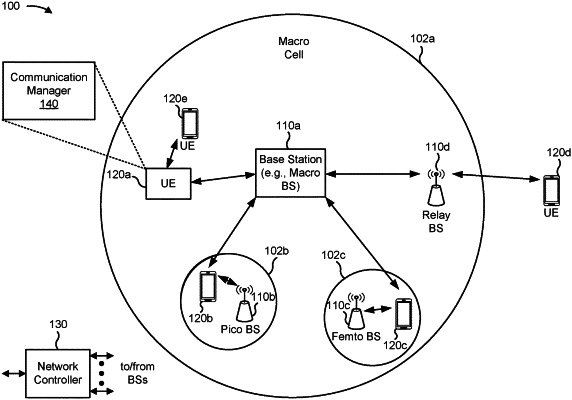| CPC H04B 7/0602 (2013.01) [H04B 7/0465 (2013.01); H04B 7/0623 (2013.01)] | 30 Claims |

|
1. An apparatus for wireless communication, comprising:
a memory; and
one or more processors coupled to the memory, the one or more processors configured to:
determine that a first time-averaged power limit, associated with a first time window, for an antenna, of a set of antennas, differs by at least a threshold amount from a second time-averaged power limit, associated with a second time window, for the antenna;
modify an antenna switching configuration based at least in part on the first time-averaged power limit being different from the second time-averaged power limit by at least the threshold amount; and
transmit a signal using a first antenna, from the set of antennas, based at least in part on the modified antenna switching configuration, wherein the first antenna is associated with a higher time-averaged power limit than one or more second antennas from the set of antennas.
|